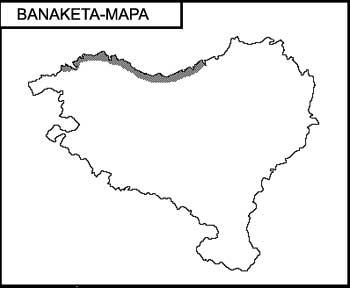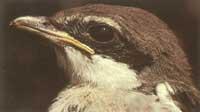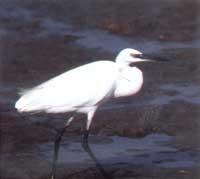Stop. Small specimens of our forests
1991/03/01 Angulo Pinedo, Rikardo Iturria: Elhuyar aldizkaria
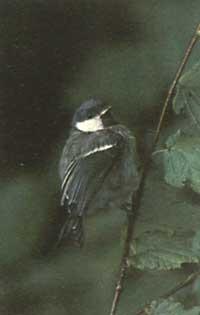
This family of birds feeds on eggs of insects, larvae, lymph and insects. They help us fight insect pests in the hamlet and jungle and also eat seeds and some fruits.
We can see both the uneven in deciduous and coniferous forests.
In the Basque Country, the family Paridae consists of five species: Large rattles ( Parus major), pine chargers ( Parus ater), small chargers ( Parus palustris), blue amilotx ( Parus caeruelus) and amilotx ( Parus cristatus).
Among them, the great charcoal ( Parus major 13 cm) is the best known and abundant in our country. Her head and neck are bright black. The cheeks are white. The male and female are characterized by the black stripe ranging from the arrow to the legs. The list of males is more alive and wider than that of females. Young people, however, cannot be separated. The yellow belly, the green shoulder of olives and the gray and white tail are the rest of characteristics of the great charcoal.
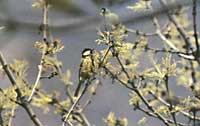
You can see this bird both on the mountain and in the village, as it sometimes lives among humans. He put in any of the holes of our trees or walls, in the nest that every year makes of moss, grass, hair, feather. It puts a lot of egg (8-13, but can be 20). They are white with small red spots.
During incubation, which lasts between 13 and 14 days, the female feeds the males during the heating of the eggs. Three weeks after their birth, the children will leave the nest and continue together until they become independent two or four weeks later. Food, 80% are insects and their larvae (such as pine caterpillar) and the rest feed on eggs of worms or flies that have entered seeds and ripe fruits. Sometimes, depending on food and weather conditions, you can make two chitazos. Put all over Europe, Asia and North Africa. In our territories it is stationary.
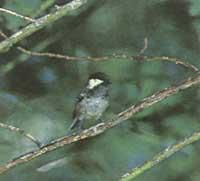
Pine charcoal ( Parus ater, 11.5 cm. ), like the rest of the family, is found in deciduous forests and especially conifers.
Black head and white cheeks. But the white spot on the nape is the most important to distinguish it. Female and male are almost equal. The breeding, for its part, has a slower plumage than the adult.
It usually nests in tree holes. In March the female begins to look for where to put the nest. In early May the female lays 7-10 eggs for 14-18 days. Pups are white with dots that are usually wrapped at one end. The offspring will leave the nest after 16-19 days. Parus ater basically feeds on insects: coleoptera and its larvae, diptera, eggs and lepidoptera larvae, etc. It also consumes seeds (of conifers) and forest fruits.
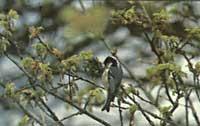
Being among us all year round, he is stationary. Like other unborn, it is gregarious except in the breeding season. It is located in northwest Africa, east Asia and almost all of Europe.
Common charcoal ( Parus palustris 11,5 cm. ), although deciduous forest is preferred, it is also found in coniferous forests. Black head and white cheeks. Grey back. However, it differs from pine quejigales due to the absence of white spots on the nape.
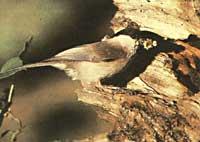
Nests in wooded areas. Normally at the end of April you can lay many eggs (7-9). The eggs are white and bright. The female puts between 13 and 17 more days on the offspring. After three weeks they will leave the nest and a week later they will gain independence.
Both in summer and winter it usually forms mixed groups with other unborn, but it is usually less congruent and is located within its breeding area.
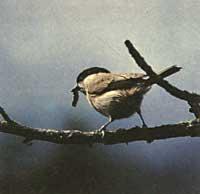
The common charcoal is the best-known species of temperate Europe. From the Atlantic Ocean to the Ural Mountains and in Asia, from the Caucasus to Japan. It is found throughout the Basque Country, except in the south of Álava and Navarra.
Amilotx blue ( Parus caeruleus) with size 11-12 cm. Keep in mind that on the white face wears a disguised band through the eyes. The throat area is also black. Above it has a blue-green plumage and below an area of yellow paparo and whitish belly.
Sometimes blue amilotx is found in coniferous forests, but usually inhabits deciduous forests. Like other noises, the last days of April nests in wooded areas, walls, reproduction boxes, etc. In breeding season it will have between 7 and 9 eggs and sometimes it will reach up to 15 (when two females catch in the same nest). Incubation is done by the female for about 14 days, although in the nest it is usually between 16 and 22 days. In addition, it has many foods. He also eats many insects. Traverse the branches, leaves and surfaces of the trees looking for lice and caterpillars. Breeding in autumn-winter and pecking different fruits. Parus caeruleus breeds throughout Europe, except in northern Scandinavia and Iceland.
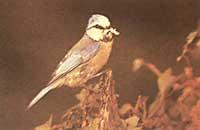
The motor Amilotx ( Parus cristatus) has a length of 11.5 cm. Its most important feature is to have the black and white bun that gives it its name. Parus cristatus is basically a species of conifers, but can also be found in oak, chestnut and birch trees. Being very confident, it is easy to see it in its continuous wanderings.
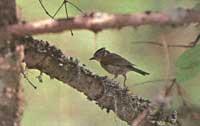
Every year it goes to the same breeding place. It usually nests in holes in the reed trees. In spring she lays 5-8 white eggs. For 13-14 days the female lays the eggs while the male feeds them. The offspring will remain in the nest for 6-7 days after hatching and leave the nest three weeks later.
This small bird, like other unborn birds, plays an important role in the fight against the pest of insects in our forests. It is insectivorous and feeds mainly on pine honeys. Although stationary, in autumn-winter leaves the woods. In winter it meets with other small birds (yezuelos, belts) to look for food in the woods.
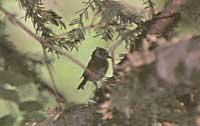
Amilotx moñudo lives in almost all of Europe: From the Iberian Peninsula to the Ural Mountains and from the Mediterranean to Scandinavia. In Italy it does not exist and in Britain it can only be found in Scotland.

Gai honi buruzko eduki gehiago
Elhuyarrek garatutako teknologia




